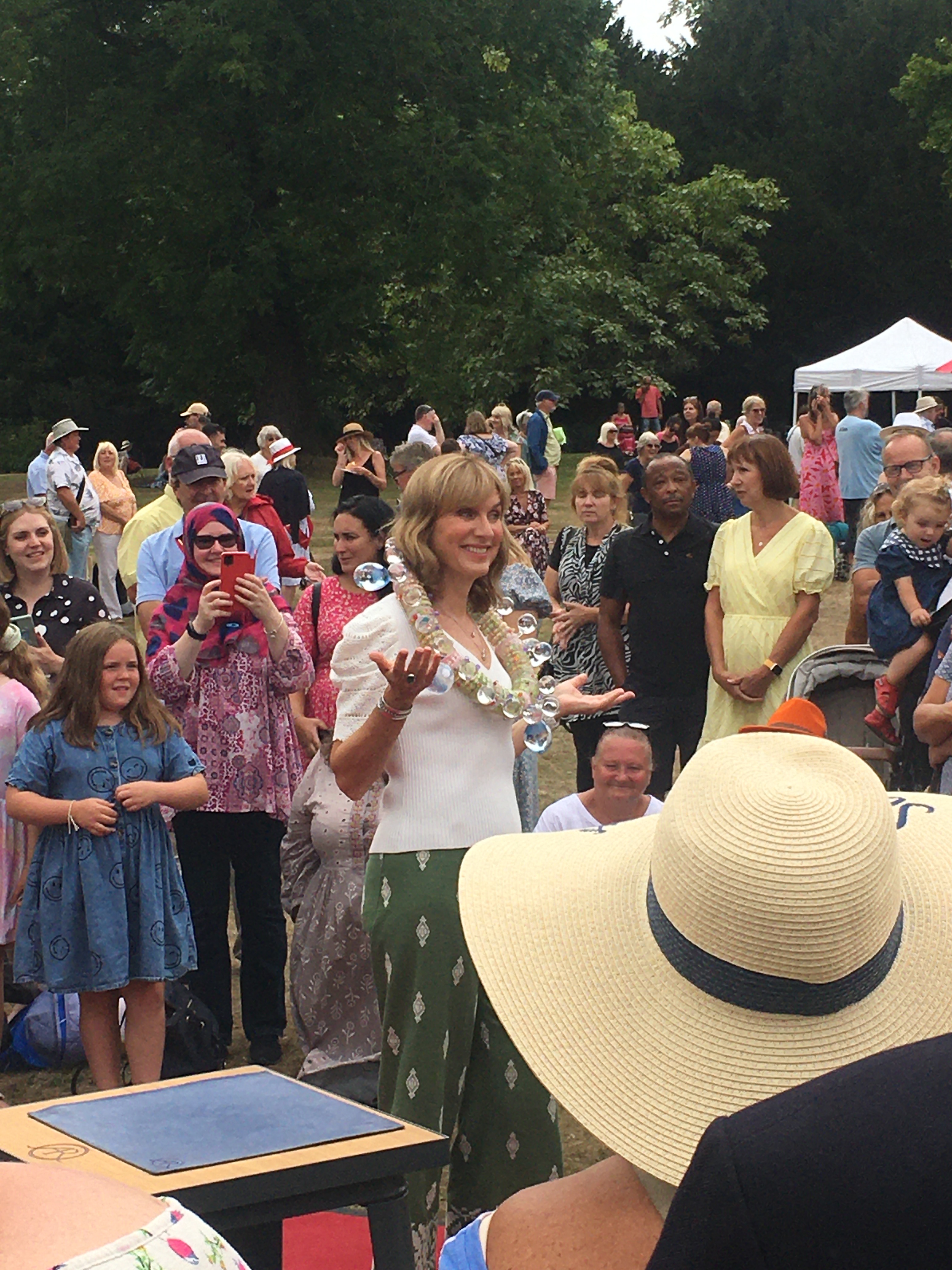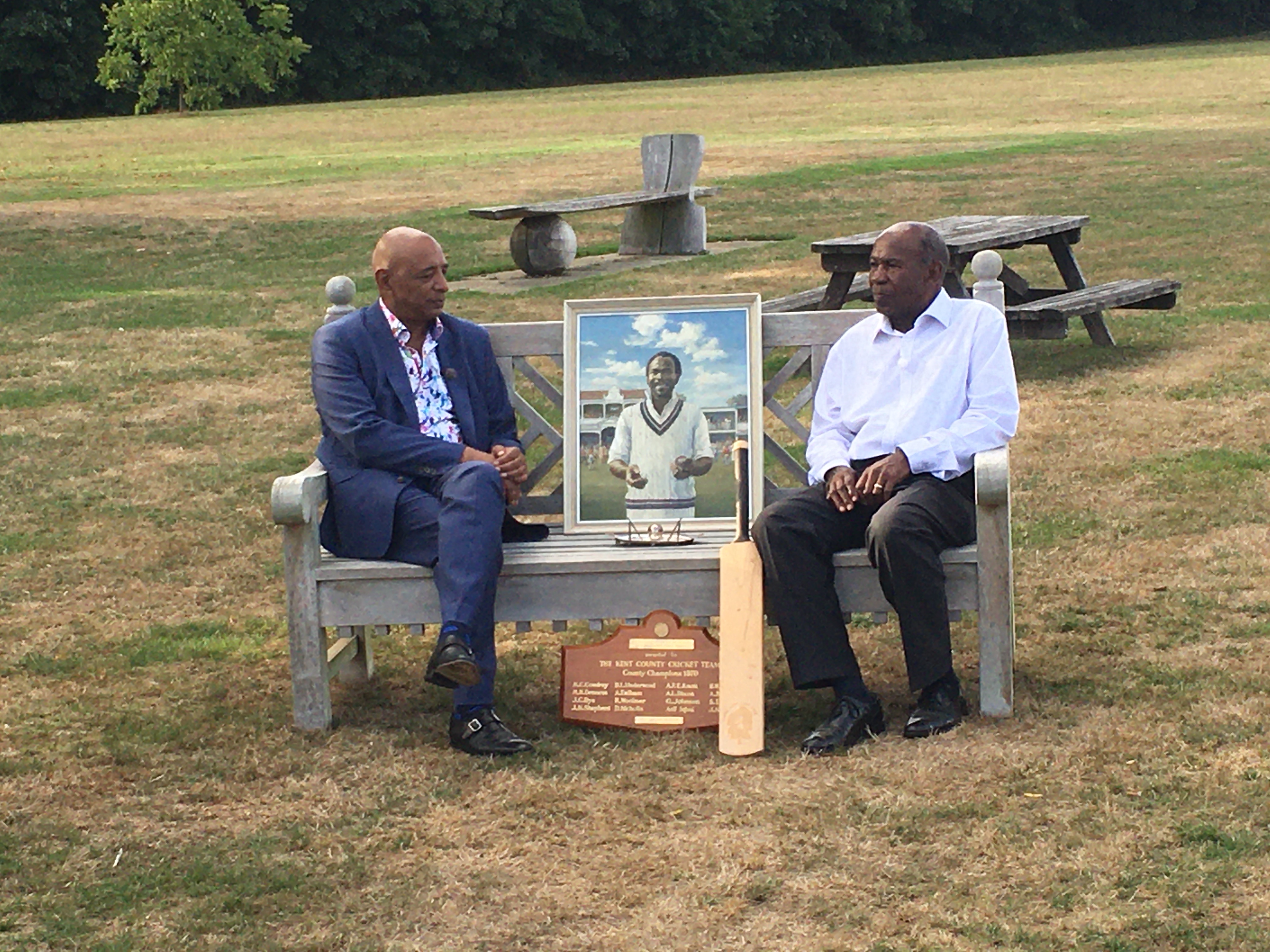This has been an exciting summer for both Kent cricket and BBC Television, especially their Antiques division. I qualify for Kent CCC’s Antiques division, and was very excited that the BBC brought both the Antiques Roadshow and the Celebrity Antiques Road Trip to Kent. While the rest of the country was concerned about inflation, Ukraine and who would pick up the poisoned chalice left by Boris Johnson, I was taking Kent’s cricketing heritage to the masses, or at least a greater mass than are interested in the Hundred.
In mid-June, Celebrity Antiques Road Trip, a show that involves travelling round the country picking up antiques and then selling them at auction for what is so rarely a profit, was touring the antiques shops of Whitstable, Margate and the north coast of the county, and wanted to come to the St Lawrence ground to see some cricketing antiques (not just Darren Stevens), one of the celebrities, Bobby Seagull, being a huge cricket fan. Kent were playing Gloucestershire that day (we eventually won by 8 wickets), so filming at the ground was limited, but we managed instead to get out to Harbledown CC (to whom many thanks for their hospitality) to talk about early cricket in the county and film a few attempts to play cricket on that sweltering afternoon. The fact that one of the cameramen, a Scot, did not even know how many players make up a cricket XI meant that getting the right angles for exciting shots took longer than we expected. We then decamped back to the Spitfire Ground where we showed them a few items from our collections, including Alfred Mynn’s bat from 1838 and a trophy or two. The show is to be aired this winter, but we haven’t got a date yet.

Then on 23 August, as Kent were edging out Lancashire in the final round of Royal London Cup matches to earn a quarter-final place, we were at Belmont House, the ancestral home of Lord Harris, where the Antiques Roadshow was being filmed. The production team had asked us to bring along some mementos of cricket and Lord Harris, so that there would be a chance to talk about the influence of the 4th Lord H on Kent. This we did, and even persuaded one of Kent’s all-time greats, John Shepherd, to be the one to talk on air to Roadshow expert Raj Bisram, who turns out to be Farokh Engineer’s nephew. They had a great conversation, which I am sure will have to be edited down for the final programme, unless they extend it to a two-hour show. Among the items that they talked about was a wooden wall plaque, which contained the Edward Hardy Gold Medal, presented to Kent CCC in 1970 by the Association of Men of Kent and Kentish Men, in honour of their Championship title that summer. It lists all the players of 1970, and looking back over half a century, you can see what a superb team it was – Cowdrey, Denness, Luckhurst, Knott, Underwood, Shepherd, Asif, Ealham, Woolmer, Johnson and several more. What a side! But we know very little about this particular item, and it appears the Association of Men of Kent and Kentish Men know very little about it either, so if anybody has any idea what its significance is, or who Edward Hardy is or was, we would be very happy to hear from you.

Of course, in Lord Harris’ time, you didn’t just get a plaque for winning the title. In 1909, when we won for the second time in four years, Lord Harris presented everybody with a silver pen and ink stand, and in our collection, and featured on Antiques Roadshow, is the one presented to the captain that year, E.W. Dillon. Ted Dillon remains the most successful captain in Kent CCC’s history, leading the side to three titles, in 1909, 1910 and 1913, so by the time he retired he must have had quite a collection of silver ink pots.
We also took along a full size bat made from the late lamented lime tree, one of only 20 made. It seems strange to have limited the lime tree bats to only 20, when the number of bails, miniature bats and other memorabilia reportedly made from that same lime tree trunk rival the number of pieces of the True Cross which were on offer to pilgrims in the Middle Ages. The connection between the lime tree and Belmont House is closer than just the Harris link. Beyond the far boundary at the Belmont House cricket pitch is a small lime tree, grown from a shoot of the original at Canterbury.
I’m not sure how much of this will make it onto the programme that is finally aired, nor do I know when it is likely to be aired, but whenever it is, I think you will enjoy it, as those of us at the Kent Cricket Heritage Trust who were involved in the making of the programmes certainly did.
0 Comments